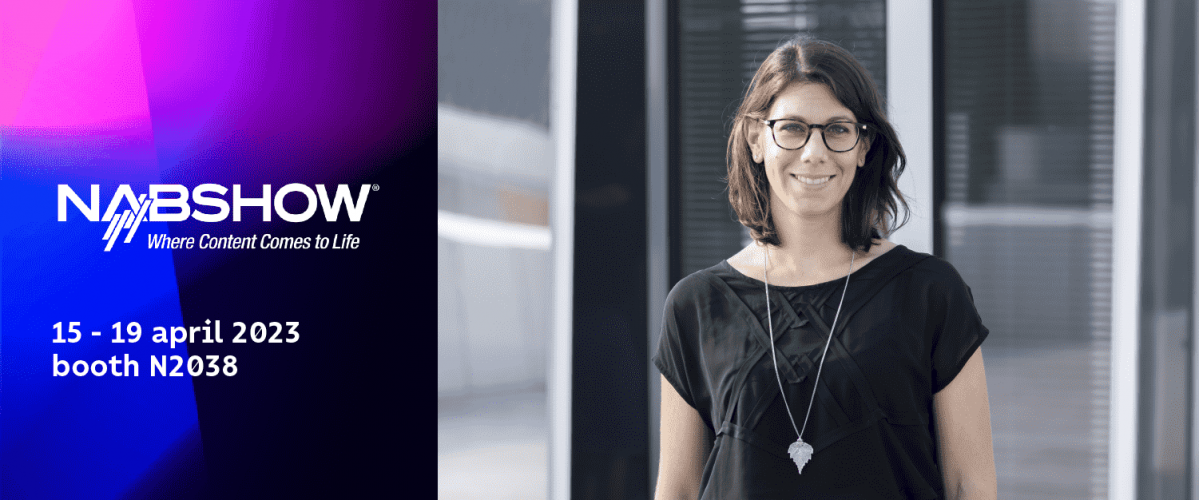The NAB Show is returning from April 15 to 19, celebrating its 100 years of existence. An opportunity to review the major trends of this edition with Tania Pouli, researcher and deputy director of b<>com's Image, Vision and Immersion lab. But also to present our SDR-HDR converter's latest features of b<>com *Sublima*. Find out more at our partner Apantac's booth in the North Hall, location N2038. You know everything.
Hello Tania. What can we expect at the Nab Show 2023?
Mostly we will see new approaches to production. There is a clear transition to an IP-based production environment: we are increasingly abandoning SDI, traditionally used for broadcast production. It's a necessary transition with the rise of remote working.
It goes with cloud-based production solutions, which we see more of, but also with the adoption of 5G, which facilitates live production through IP equipment.
Another huge trend is the introduction and adoption of AI in different production phases, especially generative AI. It is starting to move out of the research environment and into products.
Important point: there is a growing interest in responsible, greener production methods. It's a dimension that has become central to all video chain stages.
And on the b<>com side?
We have a demo of the latest version of our HDR converter, b<>com *Sublima*, which we will present in partnership with Apantac (one of our customers who integrates this technology and a leader in video processing equipment). It is a valuable solution in the professional audiovisual environment but also for training or medical purposes.
In concrete terms, what are the latest features developed on b<>com *Sublima*?
The latest feature added to b<>com *Sublima* is the ability to have multiple conversion profiles, to adapt to different production approaches. We identify this market need through discussions with content providers, producers, and TV channels.
On the one hand, some ways of producing HDR are pretty "conservative." The goal is then to experiment with these new formats and move towards an HDR workflow without necessarily pushing too hard on the level of capacities. This way of producing leads to more limited content.
On the other hand, on more cinematic content, series, etc., HDR can be used as a creative tool: we have a wider dynamic range of light and can do more things, creating more exciting effects.
In addition to SDR-HDR conversion, are there any other technologies you are working on in the lab?
This saves space in terms of storage: it reduces the number of images, saving up to 30% of the data volume. In terms of throughput, we also have gains that reach up to 10% or even 15% of the volume, depending on the content of the video.
In the same spirit, we are also working on the resolution. There is a push towards higher and higher resolutions: we already adopt 4K, and are starting to see 8K TV sets. We have an intelligent super-resolution solution, which, thanks to an AI approach, gives us a fairly compact metadata layer. This allows us to have an intelligent upscale. We achieve almost high-resolution quality but with much fewer data.
More generally, we are working to facilitate the transition to all these new formats, but in a more responsible, less energy-consuming way.



